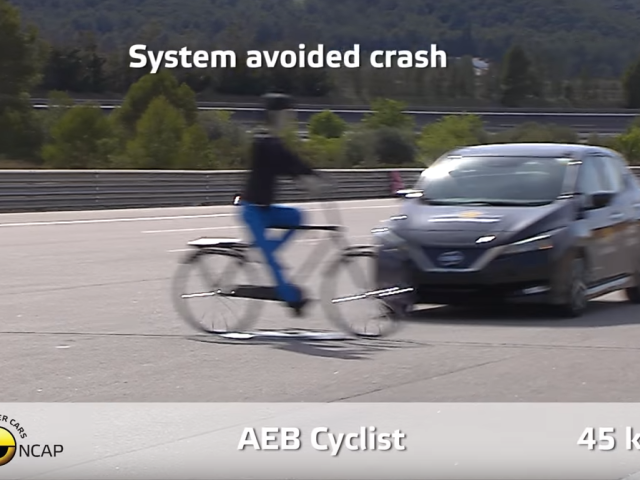Serious road injuries ‘massively’ underreported
Photo: https://commons.wikimedia.org/wiki/File:VW_Ambulance_in_Bruxelles,_Belgium.JPG
Most national governments are failing to significantly improve road safety due in part to an incomplete picture of the number of injuries on the roads and a lack of data on where and when incidents occurred, according to a new report from the European Transport Safety Council published today.
Most official statistics on road injuries in Europe are collated from police reports, but police can misjudge injury severity and rarely attend the vast majority of incidents involving pedestrians and cyclists when no motor vehicle was involved.
Although hospitals collect their own data on patients injured on the roads, governments often struggle to merge this information with police statistics to form a comprehensive picture of the scale of road injuries. Hospitals do not routinely collect information on where and when injuries occur, which is essential to identifying high-risk sites that need upgrades to prevent future incidents. Police forces, on the other hand, often have no clear knowledge of the severity of the injuries.
According to official sources, approximately 1,291,000 people are reported injured annually in the European Union, with 141,000 of these injuries being serious. However, this figure likely underestimates the true extent of the problem due to inconsistencies in data collection and sometimes massive underreporting in the police statistics
While most serious injuries are suffered as a result of collisions involving motor vehicles and are much more likely to be reported by police, many involving pedestrians and cyclists where no motor vehicle was involved go unreported.
Comparisons between collision data in Czechia from the police database and the public health insurance system revealed that the police database contained only 43% of the injuries recorded by the public health insurance system. A study in the Netherlands found that there was a police record for about 65% of those seriously injured in a collision with a motor vehicle involved, but only about 12% of those where no motor vehicle was involved.
Jenny Carson, project manager at the European Transport Safety Council said:
“Every day, all over Europe, hundreds of people are seriously injured on our roads. Policymakers underestimate both the scale of the problem and the impact that these injuries can have.
“National governments need to work harder to improve the flawed system of relying extensively on police-reported data which gives a misleading picture of the full burden of road injuries on individuals, societies and our economies.”
The European Union has set a target to reduce serious road traffic injuries by 50% between 2020 and 2030. Many countries have incorporated serious injury reduction targets into their national road safety strategies. However, the report highlights that progress in reducing serious and slight injuries is lagging behind the reduction in road deaths. Serious injuries in 24 EU Member States decreased by 13% between 2013 and 2023, which is slower than the 16% decrease in road deaths. The report emphasises that the size of the decrease over the period 2013-2023 is far from the objective of reaching a 50% reduction over the decade 2020-2030.
To address the challenges and achieve the targets, the report advocates for a “Safe System” approach to road safety which includes six key elements:
Governance and management: Ensuring leaders take responsibility, ensure transparency, guarantee funding, improve data collection, and develop partnerships.
Safe speeds: Managing speed to levels appropriate for the road environment and the vulnerability of road users.
Safe roads: Designing and maintaining infrastructure that reduces the risk of collisions and minimises injury severity.
Safe vehicles: Promoting vehicle safety technologies that prevent collisions and protect occupants and vulnerable road users in the event of a crash.
Safe road users: Encouraging responsible road user behaviour through driver training and education, enforcement, and incentives.
Post-crash care: Ensuring timely and effective emergency response and medical care to minimise the consequences of collisions.
Notes to editors:
Download the report at: www.etsc.eu/pinflash48
The European Transport Safety Council is the independent voice for road safety in Europe. www.etsc.eu
Follow ETSC on Bluesky @etsc_eu and LinkedIn.
ETSC’s Road Safety Performance Index (PIN) programme receives financial support from the German Road Safety Council (DVR), Toyota Motor Europe, the Norwegian Public Roads Administration, CITA – the International Motor Vehicle Inspection Committee and Fundación MAPFRE.







